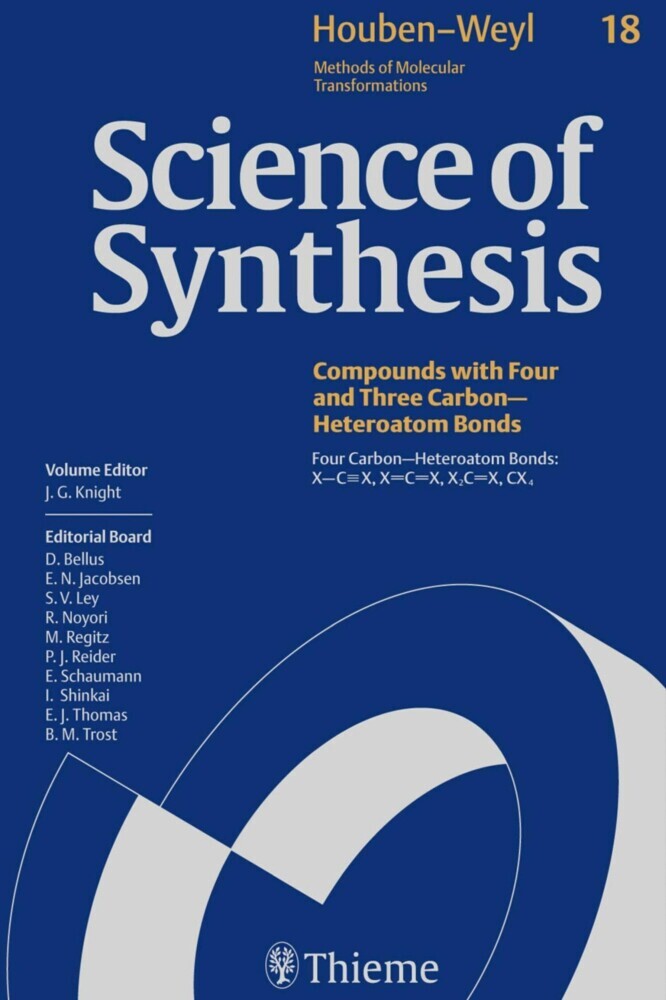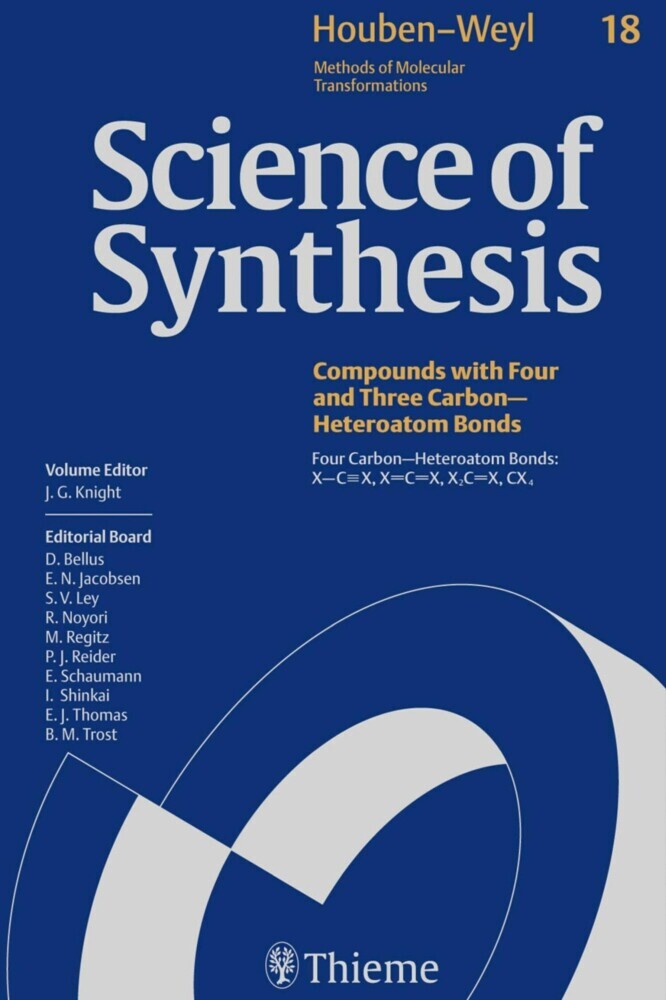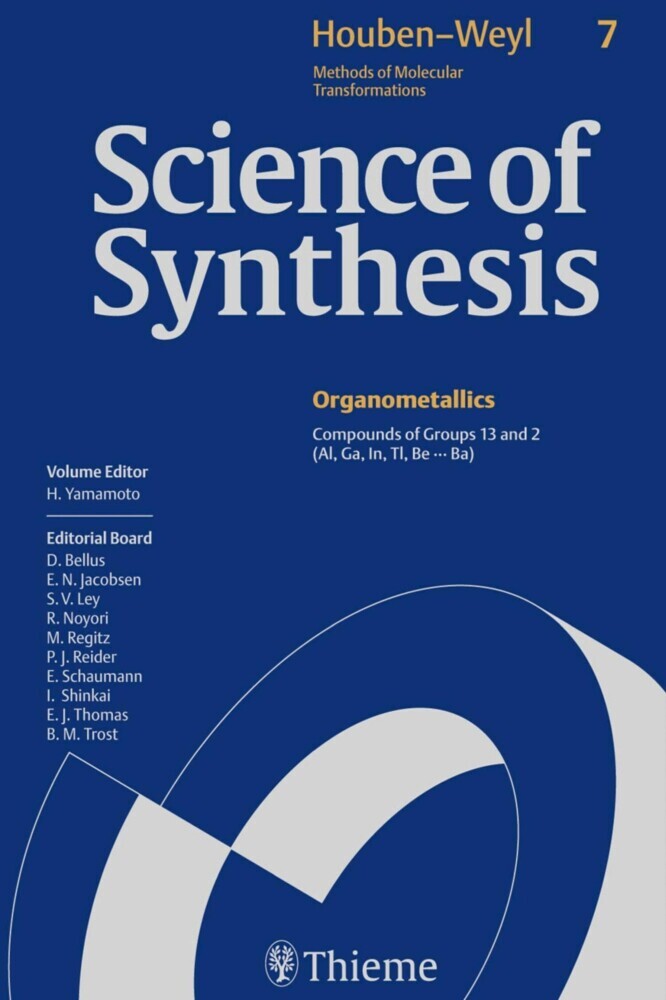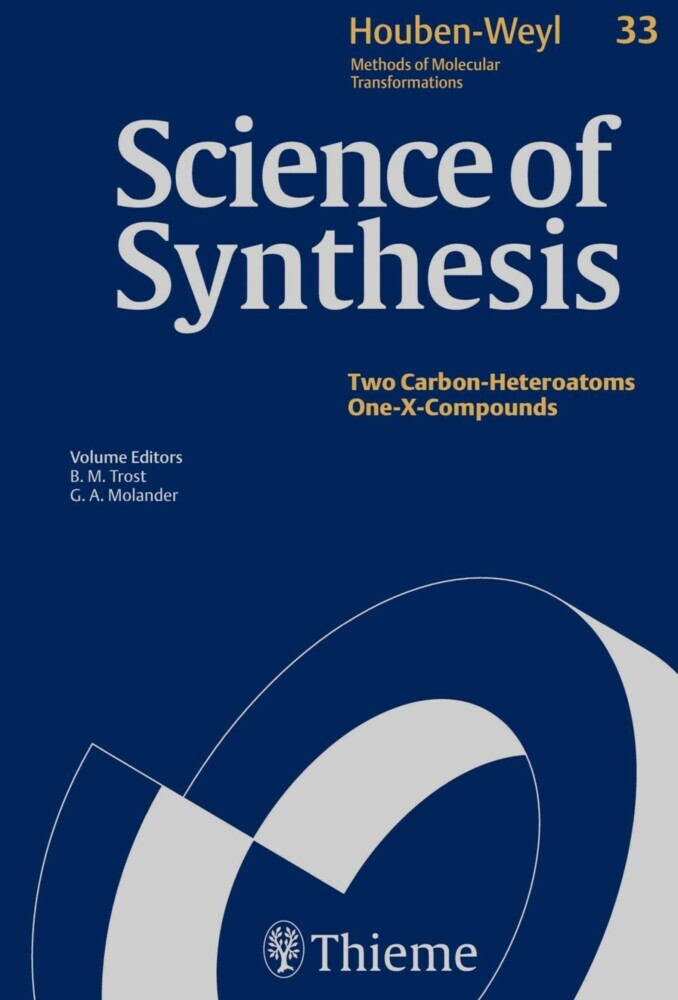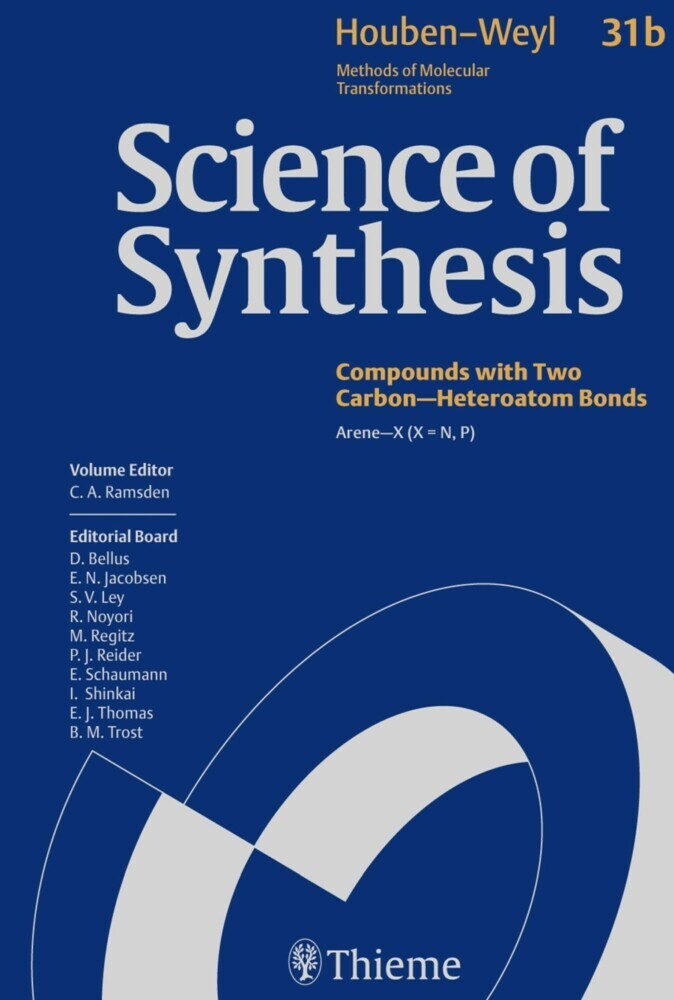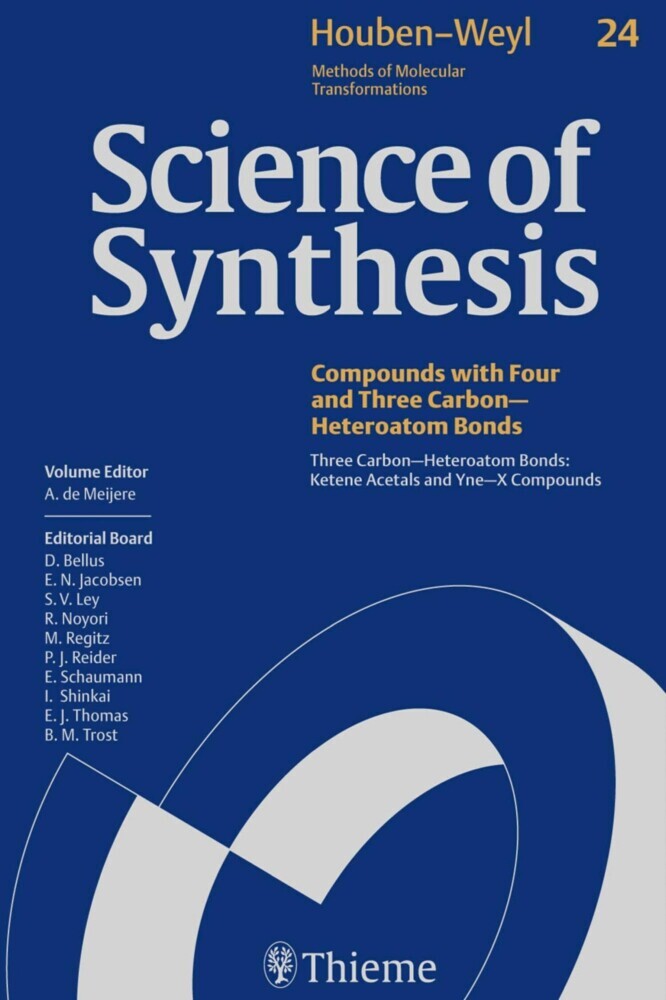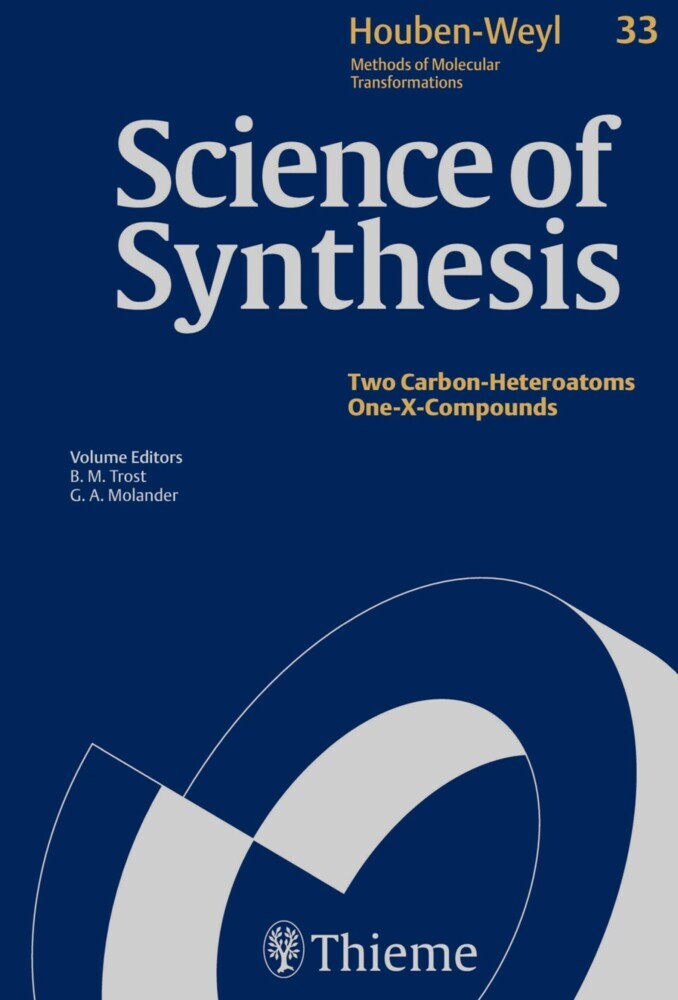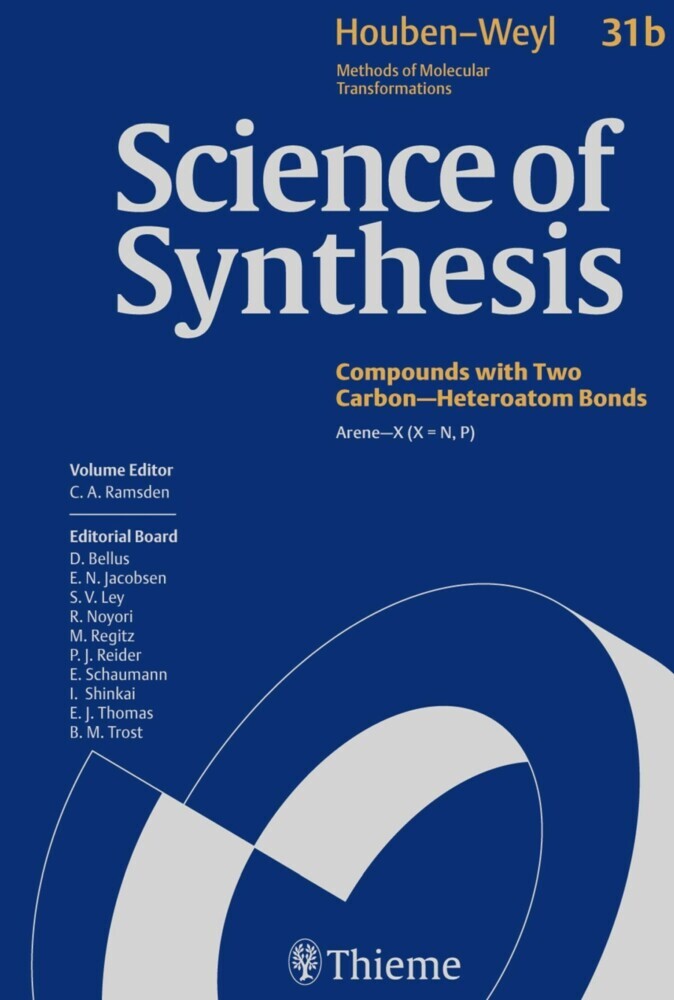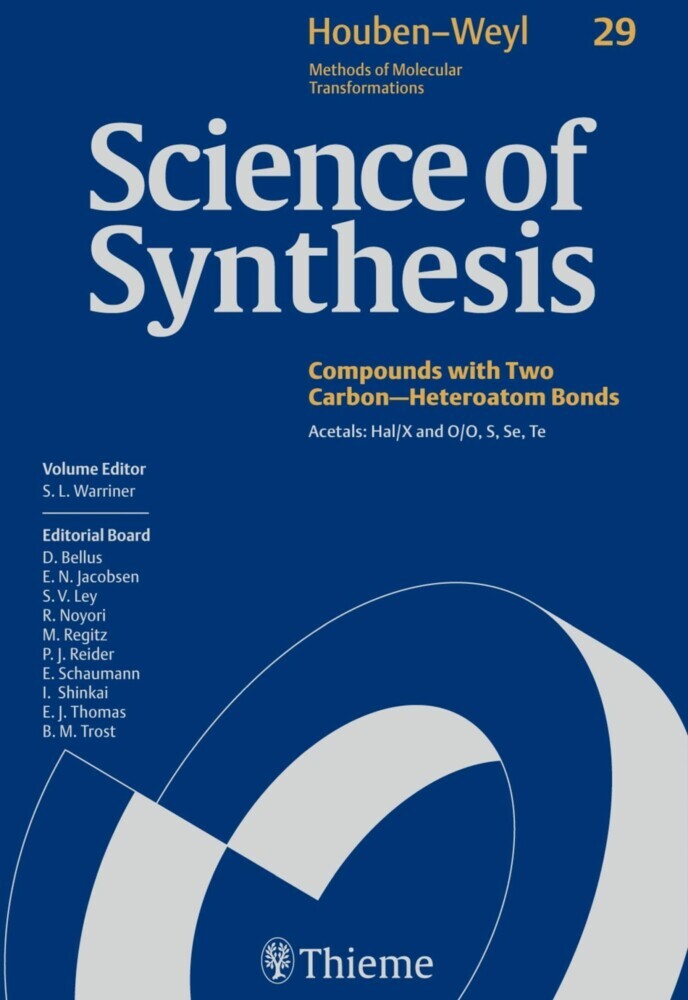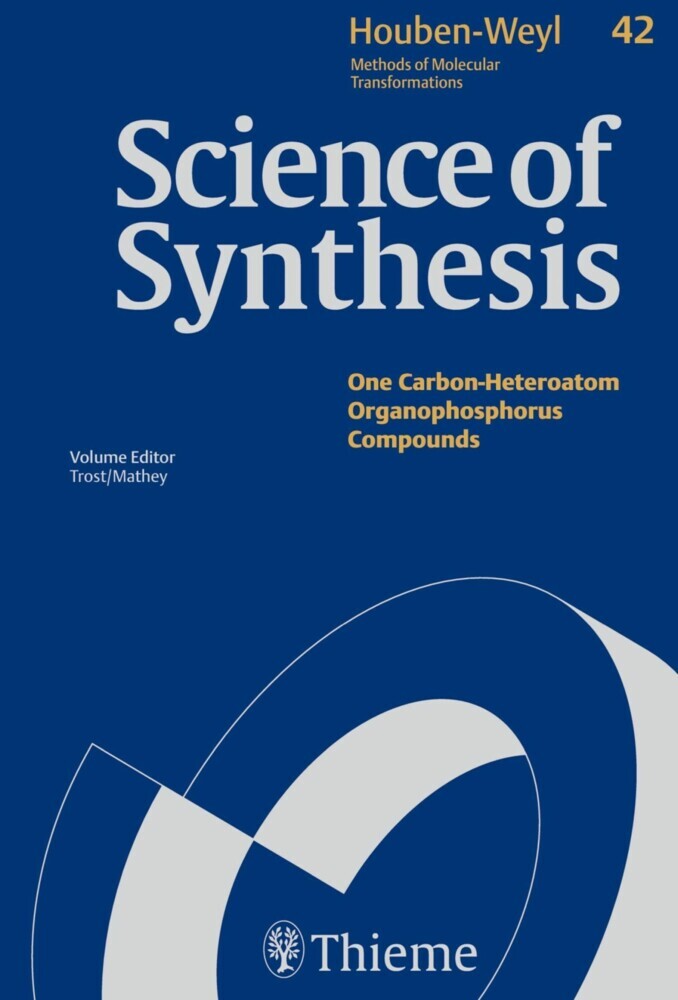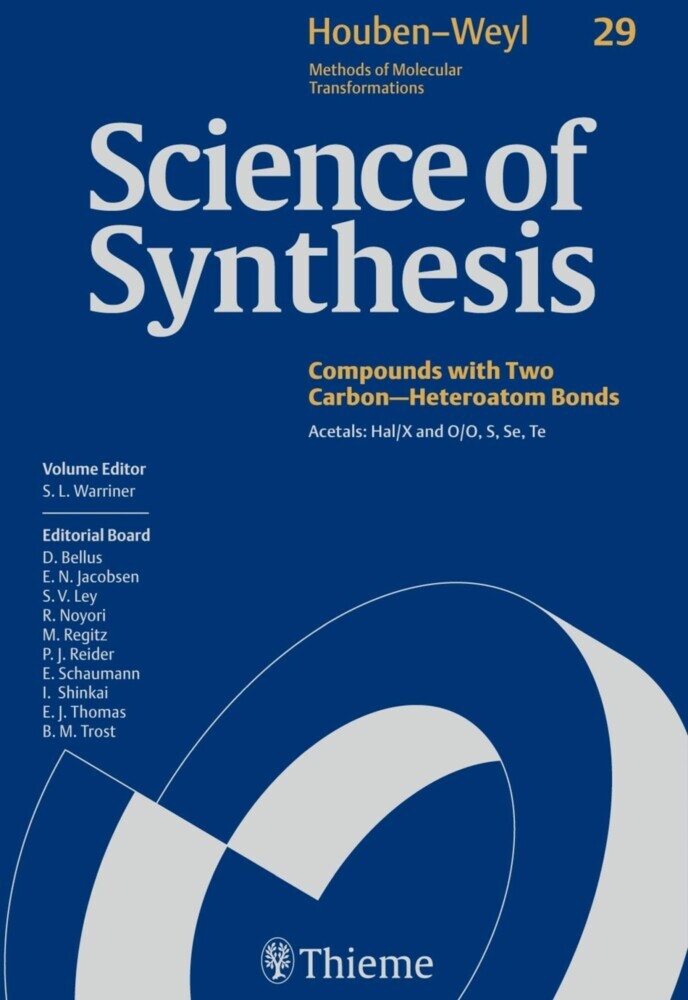Science of Synthesis: Houben-Weyl Methods of Molecular Transformations Vol. 18
Four Carbon-Heteroatom Bonds
Science of Synthesis: Houben-Weyl Methods of Molecular Transformations Vol. 18
Four Carbon-Heteroatom Bonds
Science of Synthesis: Houben-Weyl Methods of Molecular Transformations is the entirely new edition of the acclaimed reference series Houben-Weyl, the standard synthetic chemistry resource since 1909. This new edition is published in English and will comprise 48 volumes published between the years 2000 and 2008.
Science of Synthesis is a quality reference work developed by a highly esteemed editorial board to provide a comprehensive and critical selection of reliable organic and organometallic synthetic methods. This unique resource is designed to be the first point of reference when searching for a synthesis strategy.
- Contains the expertise of presently 400 leading chemists worldwide
- Critically evaluates the preparative applicability and significance of the synthetic methods
- Discusses relevant background information and provides detailed experimental procedures
For full information on the Science of Synthesis series, visit the Science of Synthesis Homepage
1;Science of Synthesis - Volume 18: Four Carbon--Heteroatom Bonds: X--C=X, X==C==X, X2C==X, CX4;1 1.1;Title page;3 1.2;Imprint;5 1.3;Preface;6 1.4;Volume Editor's Preface;8 1.5;Overview;10 1.6;Table of Contents;12 1.7;Introduction;58 1.8;18.1 Product Class 1: Cyanogen Halides, Cyanates and Their Sulfur, Selenium, and Tellurium Analogues, Sulfinyl and Sulfonyl Cyanides, Cyanamides, and Phosphaalkynes;74 1.8.1;18.1.1 Product Subclass 1: Cyanogen Halides;74 1.8.1.1;18.1.1.1 Synthesis of Product Subclass 1;74 1.8.1.1.1;18.1.1.1.1 Method 1: By Halogenation of Cyanides;74 1.8.1.1.2;18.1.1.1.2 Method 2: Cyanogen Fluoride by Pyrolysis of 2,4,6-Trifluoro-1,3,5-triazine;75 1.8.1.2;18.1.1.2 Applications of Product Subclass 1 in Organic Synthesis;76 1.8.1.2.1;18.1.1.2.1 Method 1: Cleavage of Carbon--Heteroatom Bonds;76 1.8.1.2.2;18.1.1.2.2 Method 2: Formation of Heterocyclic Rings;77 1.8.1.2.3;18.1.1.2.3 Method 3: As Cyanating Reagents;78 1.8.2;18.1.2 Product Subclass 2: Cyanates and Their Sulfur, Selenium, and Tellurium Analogues;79 1.8.2.1;18.1.2.1 Synthesis of Product Subclass 2;79 1.8.2.1.1;18.1.2.1.1 Method 1: By Nucleophilic Reactions from Cyanate Salts;79 1.8.2.1.2;18.1.2.1.2 Method 2: By Cyanation;81 1.8.2.1.2.1;18.1.2.1.2.1 Variation 1: Of Alcohols, Phenols, and Related Compounds with Cyanogen Halides;81 1.8.2.1.2.2;18.1.2.1.2.2 Variation 2: Of Halogenated Precursors with Cyanides;82 1.8.2.1.2.3;18.1.2.1.2.3 Variation 3: Thiocyanates from Sodium Sulfinates or Sulfonyl Chlorides;83 1.8.2.1.3;18.1.2.1.3 Method 3: Thiocyanates and Selenocyanates from Trimethylsilyl Isothiocyanates and Isoselenocyanates;84 1.8.2.1.4;18.1.2.1.4 Method 4: Thiocyanates and Selenocyanates from Thiocyanogen and Selenocyanogen;85 1.8.2.2;18.1.2.2 Applications of Product Subclass 2 in Organic Synthesis;87 1.8.2.2.1;18.1.2.2.1 Method 1: Formation of Heterocyclic Compounds;87 1.8.2.2.2;18.1.2.2.2 Method 2: Cyanates and Thiocyanates as Cyanating Reagents;87 1.8.2.2.3;18.1.2.2.3 Method 3: Addition of Thiocyanates or Selenocyanates to Aldehydes and Alkene Double Bonds;88 1.8.3;18.1.3 Product Subclass 3: Sulfinyl and Sulfonyl Cyanides;90 1.8.3.1;18.1.3.1 Synthesis of Product Subclass 3;90 1.8.3.1.1;18.1.3.1.1 Method 1: By Oxidation of Thiocyanates;90 1.8.3.1.2;18.1.3.1.2 Method 2: By Cyanation of Sulfinate Salts and Sulfonyl Chlorides;91 1.8.3.2;18.1.3.2 Applications of Product Subclass 3 in Organic Synthesis;91 1.8.3.2.1;18.1.3.2.1 Method 1: Sulfonyl Cyanides as Cyanating Reagents;91 1.8.3.2.2;18.1.3.2.2 Method 2: Formation of Heterocyclic Compounds from Sulfonyl Cyanides;92 1.8.4;18.1.4 Product Subclass 4: Cyanamides and Their Derivatives;93 1.8.4.1;18.1.4.1 Synthesis of Product Subclass 4;94 1.8.4.1.1;18.1.4.1.1 Method 1: By Alkylation of Cyanamide;94 1.8.4.1.2;18.1.4.1.2 Method 2: By Cyanation of Amines;95 1.8.4.1.2.1;18.1.4.1.2.1 Variation 1: With Cyanogen Halides;95 1.8.4.1.2.2;18.1.4.1.2.2 Variation 2: With Other Cyanating Reagents;95 1.8.4.1.2.3;18.1.4.1.2.3 Variation 3: By Cyanation of Halo Amines with Cyanides;96 1.8.4.1.3;18.1.4.1.3 Method 3: By Elimination from Ureas and Thioureas;97 1.8.4.1.4;18.1.4.1.4 Method 4: By Rearrangement Reactions;97 1.8.4.1.4.1;18.1.4.1.4.1 Variation 1: From Amidoximes by a Modified Tiemann Rearrangement;98 1.8.4.1.4.2;18.1.4.1.4.2 Variation 2: From N,N-Disubstituted Formamides by a Curtius-like Rearrangement;99 1.8.4.1.4.3;18.1.4.1.4.3 Variation 3: By Palladium-Catalyzed Coupling of Isocyanides, Allyl Carbonate, and Trimethylsilyl Azide through a Curtius-like Rearrangement;99 1.8.4.1.5;18.1.4.1.5 Method 5: By Decomposition of Heterocyclic Compounds;100 1.8.4.1.6;18.1.4.1.6 Method 6: Palladium-Catalyzed Formation of N,N-Diallyl Cyanamides;102 1.8.4.1.7;18.1.4.1.7 Method 7: Lewis Acid Catalyzed Reactions of Carbonyl Groups with N,N'-Bis(trimethylsilyl)carbodiimide;103 1.8.4.2;18.1.4.2 Applications of Product Subclass 4 in Organic Synthesis;103 1.8.4.2.1;18.1.4.2.1 Method 1: Forma
Bellus, Daniel
Knight, Julian G.
| ISBN | 9783131719119 |
|---|---|
| Artikelnummer | 9783131719119 |
| Medientyp | E-Book - PDF |
| Copyrightjahr | 2014 |
| Verlag | Georg Thieme Verlag KG |
| Umfang | 1461 Seiten |
| Sprache | Englisch |
| Kopierschutz | Digitales Wasserzeichen |

